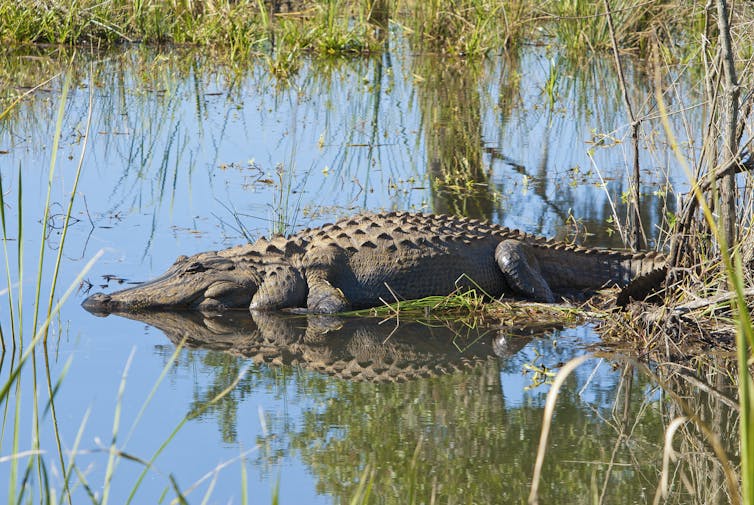‘Eco-Friendly’ Straws Contain Potentially Toxic Chemicals – Posing a Threat to People and Wildlife

Drinking straws that are made from materials like paper and bamboo are often promoted as more eco-friendly than their plastic counterparts. However, a new study has found that these supposedly sustainable straws contain potentially toxic chemicals called polyfluoroalkyl and perfluoroalkyl substances (PFAS).
These substances, commonly known as “forever chemicals”, are a large group of over 4,000 synthetic chemicals that are used in a wide range of products due to their water- and fat-repellent properties. They can be found in everyday items such as non-stick cooking pans and fast-food packaging.
PFAS can linger in the environment for thousands of years, and exposure to certain levels of PFAS has been linked to ill health both in people and in animals.
The study, conducted by researchers in Belgium, analysed commercially available drinking straws of various types and recorded PFAS concentrations in 39 separate brands. PFAS were discovered in almost all of the paper and bamboo straws tested. They were detected in plastic and glass straws too, but at a lower frequency.
Perfluorooctanoic acid was the most common PFAS detected in the straws. The manufacture of perfluorooctanoic acid has been banned in the European Union since 2020 on safety grounds. However, it can be found in old or recycled consumer products and persists in the environment.
The presence of PFAS in plant-based straws could, at least in part, be due to factors like unintentional contamination from plants grown in soil polluted by PFAS and from the use of recycled paper containing PFAS in the production of straws.

Also read: New Data: Climate Change Is Intensifying the Water Cycle, More Flooding
Detecting Forever Chemicals
The researchers used two methods to detect PFAS in the straws. First, they measured whether 29 types of common PFAS were present and quantified their amounts in the straws using a sensitive method called liquid chromatography with tandem mass spectrometry. They found 16 of the 29 target PFAS at detectable concentrations.
A screening approach was then used to detect any other PFAS compounds in the straws. This revealed the presence of two additional PFAS compounds – trifluoroacetic acid (TFA) and trifluoromethanesulfonic acid (TFMS).
TFA occurred in five of the eight paper-based straw brands tested and TFMS in six of them. Both compounds were measured in one bamboo straw.
Given TFA’s limited industrial applications, the researchers suggest that its presence in straws potentially stems from the breakdown of halogenated hydrocarbons. These hydrocarbons are commonly used as industrial solvents, intermediates in synthesis and even as dry cleaning agents.
In contrast, the sources of the TFMS in straws are uncertain. However, they are known to be associated with sites where firefighting foams have been used.
Should We be Concerned?
People could be directly exposed to PFAS in straws as they leach into our drinks during use. Discarded or recycled straws could also result in indirect exposure through contaminated soils, water, plants and other consumer products derived from recycled materials.
This is concerning. PFAS exposure poses considerable health risks to people, wildlife and the environment.
Also read: Food Expiration Dates Don’t Have Much Science Behind Them
Research indicates that pregnant women who are exposed to these substances may experience reduced fertility and heightened blood pressure. Their children could face developmental effects like low birth weight, early puberty and even an increased risk of some cancers.
PFAS exposure has even been shown to compromise the immune system’s ability to fight infections. In 2020, research from Denmark found that the severity of COVID infections seemed to be aggravated by exposure to some PFAS.
Exposure to PFAS has also been linked to a reduced reproductive ability in birds, and the development of tumours and disrupted immune and kidney function in other species of animal.
For example, research on the Cape Fear river in North Carolina in 2022 revealed that all 75 American alligators (a protected species) tested had PFAS in their blood serum. The levels of PFAS in the alligators’ serum were associated with disrupted immune functions and autoimmune-type diseases.

These chemicals are now so widespread in the environment that it is almost impossible for humans and wildlife to avoid exposure to them. Exposure to PFAS can occur in various ways, including breathing in contaminated air, to consuming tainted food and water, and even through skin contact with dust and particles.
However, using stainless steel straws might provide some protection from additional PFAS exposure. The Belgian study recorded no detectable amount of PFAS in this type of straw.
But it’s important to note that while stainless steel straws might reduce PFAS exposure, they could still expose people to other harmful substances like heavy metals. Some of these metals, including chromium and nickel, have been linked with serious health issues affecting the heart, lungs, digestive system, kidneys and liver.
Perhaps the best thing we can do for now is to avoid using straws altogether, where possible.
Ovokeroye Abafe, Marie Curie Individual Fellow, University of Birmingham.
This article was first published on The Conversation, a global media resource that provides cutting edge ideas and people who know what they are talking about.





















